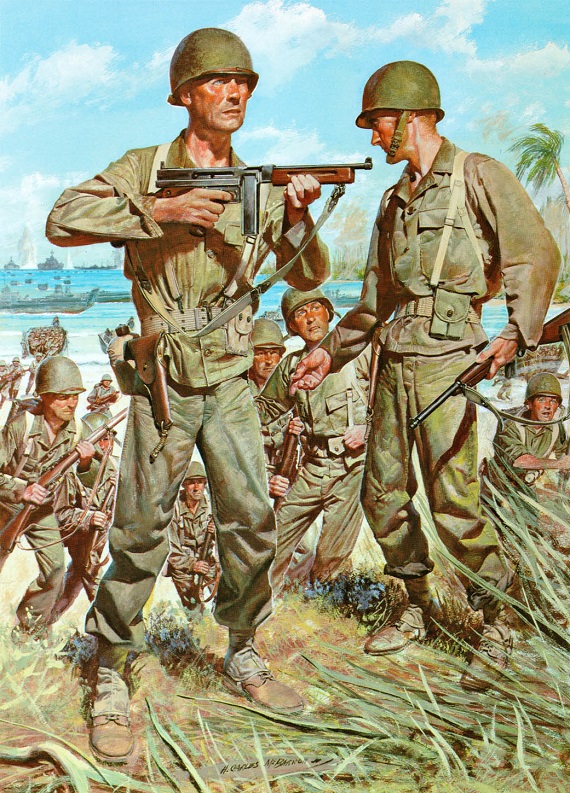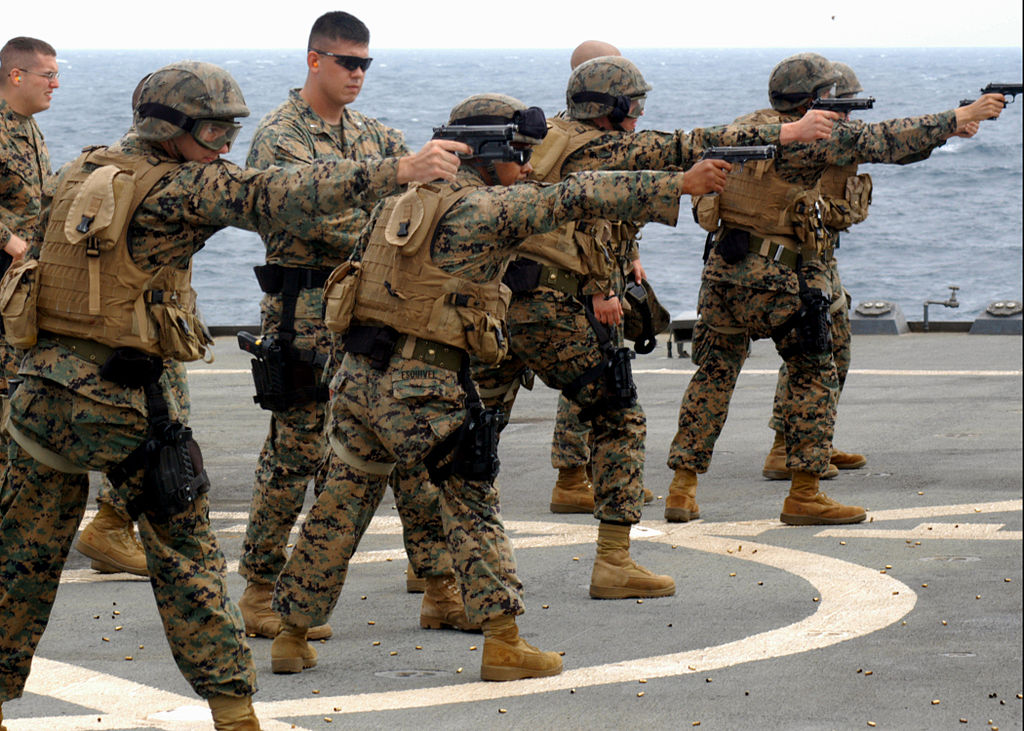The Camo Chronicles, Part 2: Elements of Uniform Design
Designing an effective camouflage pattern is only one aspect of developing and producing an optimal combat uniform.
Imagine for a moment that you're on a design team tasked with a most serious mission—developing camouflage that will reduce enemy detection of US troops as much as possible. After months of research and testing, you deliver a new uniform that surpasses your superiors' wildest dreams. It makes the wearer invisible to the human eye; it's undetectable by infrared devices; it's lightweight, durable, and comfortable in a variety of climates. Elated, the higher-ups eagerly ask for more details—only to discover that your miraculous creation will cost about $500,000 per soldier and that its mass production requires rare-earth minerals only found in a nation with whom we are currently at war. And it turns out that this wonder garment also jams radio waves, so friendly commanders are just as incapable of identifying troops as the enemy is.
This thought experiment highlights the inherent tradeoffs involved in the creation and deployment of effective combat uniforms—and in all the hubbub over the proliferation of camo patterns, it's easy to forget that camo is only one element of uniform design. The entire process a balancing act in which the task of achieving several simultaneous goals is constrained by a variety of extraneous factors. Here are some of the major goals and factors that must be taken into consideration, along with real-life examples of how they affected the final outcome.
Unit Identification and Concealment
Knowing who not to shoot at, as well as what troops are under your command, are pretty important considerations in combat. Gaudy, non-standard uniforms worn by outfits such as the Louisiana Tigers and the Zouaves led to friendly-fire incidents during the Civil War, and the Confederates’ mix of gray, butternut, and what-have-you combat attire was the source of much confusion in dawn and twilight conditions. On the other hand, sophisticated camouflage designed to make detection more difficult for the enemy can also make identification tougher for friendlies—especially worrisome when laying down area fire.
Environmental Protection
Uniforms are first and foremost clothes, and as such they have to do what clothes are meant for: provide suitable protection from the elements, with the key word being suitable. The Air Force encountered heat-buildup issues with its Airman Battle Uniform, for instance, because not enough analysis had been done on the requirements of combat situations versus base usage. And World War II jungle fighters suffered extreme fatigue and dehydration because their uniforms were hot, heavy, and slow to dry.
Material Cost, Availability, and Functionality
The suffering of those island-hopping warriors in the Pacific theater of World War II can be traced directly to the herringbone twill (HBT) used for their uniforms. While testing proved that uniforms made with poplin or Byrd cloth felt cooler, weighed less dry, absorbed less moisture, and dried more quickly, neither fabric was as durable as twill, and the Byrd cloth was in short supply and considered too expensive for widespread use.

Herringbone twill (HBT) uniforms were hot and heavy for troops in the
Pacific in World War II. But large inventories of HBT, along with its
durability, led to its selection for uniform production.
Fabric selection is also constrained by modern camouflage systems. In the patent for MARPAT, the forerunner of all U.S. military digital camo patterns, we read “that the optimum camouflage system effective in both the visible and near-infrared ranges for fabric and provides the best colorfastness properties, is a 50/50 cotton nylon fabric dyed using acid class of dyes.” But while this blend, called NYCO, is perfect for creating digital camo patterns, it has a drawback: it lacks flame resistance because the cotton burns and the nylon melts. The solution is to treat the finished product with a flame-resistant coating, but this adds over $50 to the uniform’s price tag.
Durability and Maintenance
Suitability for digital camo application wasn’t the only reason NYCO was used for so many military uniforms. It was originally selected by the Army because it holds up well to frequent starching and pressing. And the Navy opted for the blend because sailors wanted a uniform that was comfortable, that didn't require maintenance, and would stand up under a lot of washing.
The desire for low maintenance was likely the motivation for the Army to incorporate hook-and-pile tape (better known by the trademarked name Velcro) to replace buttons in its Army Combat Uniform. Unfortunately, Velcro strips caught on foreign objects make ripping sounds that might be heard by hostiles, and Velcro’s not good at keeping stuffed cargo pockets closed, especially when it becomes clogged with dirt and sand. Army brass listened to soldiers’ complaints and decided to drastically reduce the use of Velcro in its ACUs—a move that netted nearly a dollar in savings per uniform.
Morale and Recruiting
Is it possible to determine how much uniform appearance boost morale or recruiting? Probably not, but those are two of the stated goals used to justify creating new designs. In its September 2012 report on development of camouflage uniforms, the GAO wrote that “the services also expected the new uniforms to provide other benefits, such as a unique appearance to increase the morale of personnel and aid in recruitment.”

U.S Marines wearing the Woodland variant of MARPAT digital camouflage.
The Marine Corps, in particular, places huge emphasis on its uniforms. Recently retired USMC Sgt. Maj. Micheal Barrett told the Marine Corps Times in 2013 that “There are tactical and psychological advantages unique to our [combat uniform] in terms of morale and culture. Like our dress blues, the [combat uniform] is a visible indicator of our identity as United States Marines, globally! It’s part of our Corps’ identity.” That focus on a unique identity goes a long way toward explaining the reluctance in completely sharing its camo-research success with other branches of the armed forces.
Next: The Marines Set the Bar
Previous: Hidden in Plain Sight